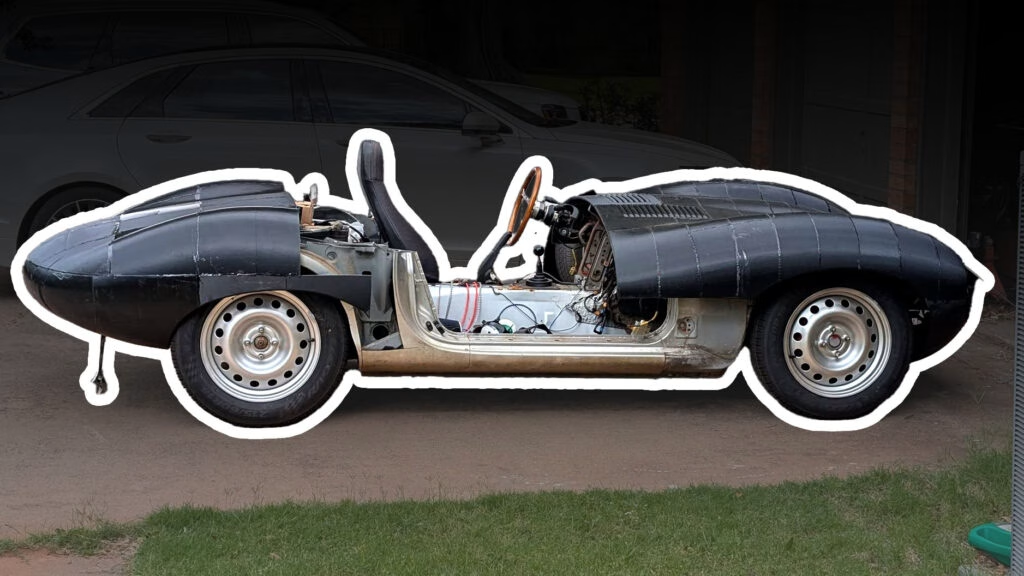Imagine wanting to own a classic Jaguar D-Type, but the price tag makes your wallet cringe. Genuine models can fetch millions at auction, leaving many car enthusiasts dreaming rather than driving. But what if I told you there’s a way to get that iconic look without breaking the bank? Enter Scott Woodard, a passionate car builder who’s taking the automotive world by storm with an innovative approach: 3D printing.
### How Is Scott Woodard Making a Jaguar D-Type?
Scott is currently in the process of 3D-printing a Jaguar D-Type body to fit onto a Mazda MX-5 chassis. Using a Neptune 4 Plus printer, he’s crafting each body panel from ABS plastic, a material known for its durability and versatility. The printer has a build space of about 320x320x385 mm, which means each panel is roughly the size of a large pizza. It’s a fascinating blend of modern technology and classic design, allowing Scott to create a replica that captures the essence of the D-Type without the exorbitant cost.
### What Challenges Does He Face?
Every project has its hurdles, and Scott’s journey is no exception. He describes the entire process as a challenge, especially since he only started using his printer a couple of months before embarking on this ambitious project. “Hours of research and brainstorming gave me the confidence to take on something so foreign,” he shares. His previous experience with a bespoke Karmann Ghia, which he built using a modern Mercedes-Benz SLK chassis, has certainly equipped him with valuable skills for this endeavor.
### What’s the Difference Between Body Swapping and 3D Printing?
You might wonder how 3D printing a car body differs from traditional body swapping. According to Scott, both processes involve a fair amount of cutting and adjusting. However, with the 3D-printed panels, he has the advantage of knowing potential clearance issues beforehand, thanks to his prior experience. This foresight can save a lot of headaches down the line, making the project more manageable.
### What’s Next for Scott and the Car Community?
Scott isn’t just keeping his findings to himself. He’s excited to share a new method he’s developed to strengthen 3D-printed ABS and ASA panels, which could be a game-changer for DIY car builders everywhere. He plans to create a video tutorial for YouTube, aiming to help others who want to tackle similar projects, whether it’s building spoilers, body kits, or even entire car bodies. This spirit of sharing knowledge is what makes the car community so vibrant and innovative.
### The Future of Car Building
Scott Woodard’s project is more than just a personal endeavor; it represents a shift in how we think about car manufacturing and customization. As 3D printing technology becomes more accessible, we can expect to see more enthusiasts taking matters into their own hands, creating unique vehicles that reflect their personal style without the hefty price tag.
The big takeaway? 3D printing a car isn’t about perfection—it’s about smarter adjustments. Start with one change this week, and you’ll likely spot the difference by month’s end. Whether you’re a seasoned car builder or just a curious enthusiast, Scott’s journey is a reminder that innovation is just a print away.

